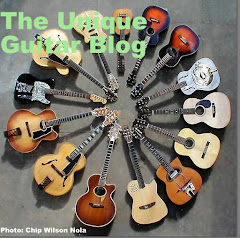 |
| Eddie Van Halen |
In 1972 Eddie co-founded the rock band Van Halen along with his brother, Alex Van Halen, and their friend, bass player Mark Stone. They went on to become one of the world's most popular and game changing rock groups.
 |
| Van Halen "tapping" on guitar |
 |
| Eddie Van Halen "Eruption" |
Tapping was a technique used in Turkish folk music. It has also been used by flamenco guitarists for at least a century. Even Western virtuosos like violinist Paganini used this technique on both violin and guitar.
Steve Hackett, the lead guitarist with Genesis in the 1970’s, is "widely credited with inventing two-handed tapping" for Rock guitar. He was a big influence on Eddie.
When asked about this, Hackett said, "Eddie and I have never spoken about it, but yes, he has credited me with tapping. George Lynch said in an interview that he and Eddie saw Harvey Mandel tap at the Starwood in the 1970s.
 |
| Jimmy Page |
Eddie also cited Jimmy Page of Led Zeppelin as a big influence, saying in an interview with Guitar World: “I think I got the idea of tapping watching Jimmy Page do his "Heartbreaker" solo back in 1971. He was doing a pull-off to an open string, and I thought wait a minute, open string pull off. I can do that, but what if I use my finger as the nut and move it around? I just kind of took it and ran with it.”
 |
| Jimmy Webster |
A guitarist named Jimmy Webster that demonstrated Gretsch guitars in the 1950’s developed a method of two handed tapping. He was encouraged to play in this style by Harry DeArmond, the inventor, manufacturer, and owner of DeArmond pickups, as a way of testing his company’s products.
Prior to him, Roy Smeck, who was a guitarist, but mainly known as a ukulele player, used the two-handed tapping technique.
In 1969, Emmett Chapman invented an instrument called The Chapman Stick. This instrument was played exclusively by tapping the bass and treble strings.
Eddie Van Halen and his brother Alex were born in Amsterdam. The family later moved to the Dutch East Indies. They left due to the racially prejudice threats experienced by Eddie's mother, who was half Indonesian.
 |
| Alex and Eddie Van Halen |
In 1962 the family immigrated to the United States and settled in Pasadena, California. The family all became naturalized citizens. Eddie was always proud of “living the American Dream.” At the time, none of the family spoke English, and arrived with only $50 and a piano.
Eddie Van Halen’s father was a professional clarinetist, and sent Eddie and his five siblings for piano lessons. Like many people I know, Eddie learned from watching and listening instead of reading music. His teacher realized this and suggested that Eddie might do well on a different instrument. Later on Eddie bought a guitar, and his brother Alex bought a drum kit.
In elementary school they formed a band called The Broken Combs and played cover songs that were popular at the time. Eddie played piano and Alex played saxophone in this group.
By 1972 Eddie and his brother Alex formed a new band. Two years later they called the band "Van Halen" and they became a staple of the Los Angeles music scene playing in well known clubs.
 |
| Van Halen in 1972-73 |
By 1992 Van Halen won a Grammy Award for Best Hard Rock Performance for the album Unlawful Carnal Knowledge. The band charted 13 number one hits on Billboard’s Mainstream Rock Chart, and Van Halen was inducted into the Rock and Roll Hall of Fame.
 |
| Eddie Van Halen Invention |
 |
| The Frankenstrat |
Eddie installed a single Gibson PAF (patent applied for) bridge pickup from a Gibson ES-335, which he enclosed with paraffin wax to prevent feedback.
The Frankenstrat was originally painted black, but Eddie later recoated it with Schwinn red bicycle paint in 1979. He used tape to get the the unique striped effect.
Eddie used a variety of pickups including 1970s Mighty Mites, which were made by Seymour Duncan and were designed as copies of DiMarzio Super Distortion pickups. Eddie also used Gibson PAFs in the Strat, one of which was rewound by Seymour Duncan in 1978.
In 1992 Eddie inked a deal with the Peavey Company to design a tube amplifier called the 5150. The amps unusual name came from the California Law enforcement code for a mentally disturbed person. 5150 was also the name that Eddie had given to his home studio. The Peavey deal lasted until 2004. Peavey renamed the amplifier the 6505.
The 5150 amplifier has five cascading pre-amplifiers and achieves some of it’s sound due to it’s lowered fixed bias. Lowering the voltage to the tubes and gives more control over the gain setting. Prior to this Van Halen had used a Variac on his Marshall amplifiers to lower the voltage achieving what he called “The Brown Sound”.
Before joining forces with Peavey, Eddie had endorsed Charvel and Ernie Ball Music Man instruments. In 1996 Peavey introduced a guitar that Eddie had aided in designing and called The Wolfgang Guitar which was named after Eddie’s son.
For Van Halen's 2012 tour, and early 2015 television appearance's, he used a Wolfgang USA guitar with a black finish and ebony fretboard. For the 2015 tour, he used a white Wolfgang USA guitar, which was designed by Chip Ellis. These guitars featured kill switch that allowed Eddie to get some stuttering volume effects.
For the Wolfgang's pickup selection
Eddie used a variety of pickups including 1970s Mighty Mites, which were made by Seymour Duncan and were copies of DiMarzio Super Distortion pickups. Eddie also used Gibson PAFs, one of which was rewound by Seymour Duncan in 1978.
In an interview with Guitar World in 1985, Eddie stated that his guitar sound which he called "brown sound" is "...basically a tone, a feeling that I'm always working at . It comes from the person. If the person doesn't even know what that type of tone I'm talking about is, they can't really work towards it, can they?"
In an interview with Billboard magazine in June 2015, he stated that with the expression "brown sound" he is including his guitar sound and also the sound of his brother Alex's snare drum, which he thought "...sounds like he’s beating on a log. It’s very organic."
 |
| Valerie Bertinelli and Eddie Van Halen |
By 2005, Bertinelli filed for divorce in Los Angeles after four years of separation. She said this was due to Eddie's addiction. The divorce was finalized in 2007.
The following year, Eddie proposed to his girlfriend, Janie Liszewski, an actress and stuntwoman who was also Van Halen's publicist at the time. They married in 2009, at his Studio City estate, with his son Wolfgang and ex-wife Bertinelli in attendance.
Eddie Van Halen struggled with alcoholism and drug abuse for much of his life. He began smoking and drinking at the early age of 12. He stated that he eventually needed alcohol just to function. Eddie entered rehabilitation in 2007, and later shared in an interview that he has been sober since 2008.
 |
| Van Halen In Concert |
He began receiving treatment for tongue cancer in 2000. The subsequent surgery removed roughly a third of his tongue. He was declared cancer-free in 2002.
 |
| Eddie Van Halen |
In 2012, Van Halen underwent an emergency surgery for a severe bout of diverticulitis.
Recovery time required due to the surgery led to postponement of Van Halen tour dates scheduled in Japan.
 |
| Eddie Van Halen |
Van Halen was later hospitalized in 2019 after battling throat cancer over the previous five years. He died from the illness on October 6, 2020, at the age of 65 at Saint John's Health Center in Santa Monica, California.
Click on the links under the pictures for sources. Click on the links in the text for further information.
©UniqueGuitar Publications 2020 (text only)

















































